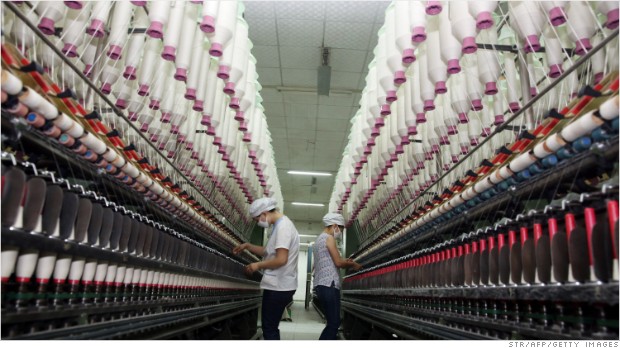Investors have rediscovered developing countries, sending their stocks up 16%, as a group, since late June.

A growing number of analysts who follow these countries, known in the trade as emerging markets, find that troubling. Their message: Proceed at your own risk.
Emerging markets are exciting to investors because for much of the past decade, EM stocks and bonds delivered the big gains. Many investors still are nervous about U.S. stocks, even though many major U.S. indexes are in or near record territory.
In the early 2000s, many investors developed a reflex. When they want to take a risk and add some pop to their portfolios, they put a little money in emerging markets like India, Brazil, Turkey or China.
These analysts are warning that things have changed.
"It is certainly going to be a much more volatile ride than most people expect," says Manoj Pradhan, global emerging-markets economist at Morgan Stanley.
Mr. Pradhan recently wrote a report entitled, "EM—Is the Worst Behind Us Now?" His conclusion: "The worst is not behind us: In fact, things likely have to get worse so they can then get better."
Nimble short-term speculators may profit in volatile emerging markets, say Mr. Pradhan and other worried analysts. But investors with two-year outlooks could feel some pain.
Not everyone agrees with this analysis, of course. Bullish investors point out that developing countries always look unstable. They still are likely to grow faster than the U.S. and Europe. If the world economy is more resilient than the doomsayers think, the developing world will benefit, these analysts say.
Emerging markets have far more of the world's economic output than they do stock-market capitalization, meaning stock values should grow, notes Jason Thomas, research director at Carlyle Group, which oversees $180 billion. Any stock declines "provide attractive opportunities for investors to diversify into" emerging markets, he wrote in a report this month.
The risk is that the ride will be bumpy.
"The fundamental backdrop that led us to be so concerned about emerging markets in the first place hasn't changed a lick," says Richard Bernstein, founder of Richard Bernstein Advisors, which oversees $1.8 billion in New York. Inflation and corporate-earnings disappointments have been worse in the developing world, he says.
"U.S. small stocks are a better growth story than emerging markets," based on five-year forecasts, he says.
The worriers identify three big problems. First, the global economy has cooled and so has the global export boom that fueled developing-world growth. Future growth requires a shift toward spending by developing countries' own citizens, a painful, time-consuming transition.
Second, stock gains and business investment in many developing economies relied on huge inflows of foreign money. Those flows got so big that it will be hard for them to grow as before. Few countries are ready to shift to homegrown financing.
A third problem is rising interest rates. The U.S. Federal Reserve and other central banks have held down interest rates around the world, masking some of the weakness in the developing world's finances. But the Fed intends to reduce its stimulus and let rates rise in the months to come. Some other central banks could follow.
Unless U.S. and global growth prove much weaker than economists expect, which would delay Fed action but create other problems for emerging markets, the interest-rate backdrop is about to get worse.
The flow of investment into developing-world stock funds reflects this interest-rate issue. Money drained out in May, when Fed officials hinted they would start reducing stimulus this year, according to EPFR Global, which tracks such flows. In mid-September, when the Fed delayed cutting its $85 billion in monthly bond-buying stimulus, inflows resumed, only to reverse direction at the end of October amid fear the Fed would reduce stimulus in December.
Some countries have handled the transition better than others. Mr. Pradhan likes South Korea, Taiwan, Poland, the Philippines, Mexico, Columbia and Peru. But that is it.
He advises staying away, in particular, from a group Morgan Stanley has dubbed the Fragile Five: India, Brazil, Turkey, Indonesia and South Africa.
Every country's situation is different. Brazil is a big commodity exporter, India exports services and China, which also concerns Mr. Pradhan, imports commodities and exports manufactured goods.
Neil Shearing, chief emerging-markets economist at Capital Economics in London, is worried about all four of the big economies that got the most investor attention: Brazil, Russia, India and China, a group that was dubbed the BRICs.
Together, they account for one-quarter of world economic output, and they all have fundamental problems, he says. "Growth there will be slower than in the previous decade," he says.
Russia depends too much on high energy prices, Mr. Shearing argues. China still relies too heavily on cheap credit and investment in heavy industry and real estate. Brazil and India, as well as Turkey, Indonesia and South Africa, are too dependent on foreign money.
This was all right when foreign capital was cheap, export demand was rising fast and foreigners were racing to invest. "We are getting to the end of that era," Mr. Shearing says.
He likes emerging markets in Eastern Europe, but not much else.
As long as the Fed keeps interest rates low, many emerging markets may not face a crunch. The Fed's monthly $85 billion cash injections keep global financial markets humming.
Uncertain U.S. growth and the financial mess caused by Washington's squabbles put a hold on Fed action in September. But some economists think recent signs of U.S. strength, notably in manufacturing, could push the Fed to scale back, or taper, its spending in December or the first months of next year.
"Next year, once the Fed starts tapering and yields rise, we are going to see pressures in the emerging markets," says Alberto Ades, head of fixed-income and foreign-exchange strategy for emerging markets at Bank of America Merrill Lynch.

 Popular Posts: 5 Oil and Gas Stocks to Buy Now7 Biotechnology Stocks to Buy Now5 Pharmaceutical Stocks to Buy Now Recent Posts: 6 Machinery Stocks to Buy Now 3 Oil and Gas Stocks to Buy Now 17 Oil and Gas Stocks to Sell Now View All Posts
Popular Posts: 5 Oil and Gas Stocks to Buy Now7 Biotechnology Stocks to Buy Now5 Pharmaceutical Stocks to Buy Now Recent Posts: 6 Machinery Stocks to Buy Now 3 Oil and Gas Stocks to Buy Now 17 Oil and Gas Stocks to Sell Now View All Posts 


 ) announced that it has acquired Cornerstone Records Management for $191 million in cash.
) announced that it has acquired Cornerstone Records Management for $191 million in cash. China last week announced a major program of economic and other changes that together have the potential to boost the nation’s investment appeal. This is one of the most ambitious attempts at liberalizing China’s economy since Deng Xiaoping opened up the country to global markets starting in the late 1970s.
China last week announced a major program of economic and other changes that together have the potential to boost the nation’s investment appeal. This is one of the most ambitious attempts at liberalizing China’s economy since Deng Xiaoping opened up the country to global markets starting in the late 1970s.



 ASSOCIATED PRESS
ASSOCIATED PRESS 



 Popular Posts: Investing’s ‘Magic Formula’ Points to AAPL, Gun StocksChina Stocks Face a Demographic CollapseDaimler Firing on All Cylinders – And It’s Not Too Late to Buy Recent Posts: Ignore Whiny Wine Headlines — Put Your Money Into the Hard Stuff! Investing’s ‘Magic Formula’ Points to AAPL, Gun Stocks China Stocks Face a Demographic Collapse View All Posts
Popular Posts: Investing’s ‘Magic Formula’ Points to AAPL, Gun StocksChina Stocks Face a Demographic CollapseDaimler Firing on All Cylinders – And It’s Not Too Late to Buy Recent Posts: Ignore Whiny Wine Headlines — Put Your Money Into the Hard Stuff! Investing’s ‘Magic Formula’ Points to AAPL, Gun Stocks China Stocks Face a Demographic Collapse View All Posts 
 At the heart of the runup and subsequent pullback from DryShips, NewLead Holdings Ltd, and FreeSeas - and again, most of the dry goods shipping stocks - is the Baltic Dry Index... a measure of the change in prices to charter a dry-bulk-carrying vessel. These prices have been depressed for years, with the index falling from more than 11,000 in the heydays of 2008 to the 900-ish area for the better part of the last year and a half. A funny thing happened in June, though. Demand for shipping services finally caught up with the supply, and companies like NEWL, FREE, and DRYS got into a position (at least in investors' minds) where they could start to charge what they needed to charge to remain profitable rather than flounder at the mercy of companies that ship dry goods. Between late-May and late-September, the Baltic Dry Index had run from 812 to 2084, with most of the industry's stocks finally getting on board with the runup beginning in September.
At the heart of the runup and subsequent pullback from DryShips, NewLead Holdings Ltd, and FreeSeas - and again, most of the dry goods shipping stocks - is the Baltic Dry Index... a measure of the change in prices to charter a dry-bulk-carrying vessel. These prices have been depressed for years, with the index falling from more than 11,000 in the heydays of 2008 to the 900-ish area for the better part of the last year and a half. A funny thing happened in June, though. Demand for shipping services finally caught up with the supply, and companies like NEWL, FREE, and DRYS got into a position (at least in investors' minds) where they could start to charge what they needed to charge to remain profitable rather than flounder at the mercy of companies that ship dry goods. Between late-May and late-September, the Baltic Dry Index had run from 812 to 2084, with most of the industry's stocks finally getting on board with the runup beginning in September. 